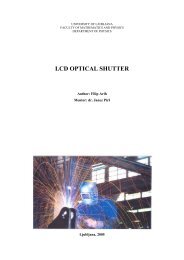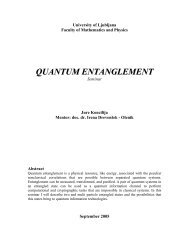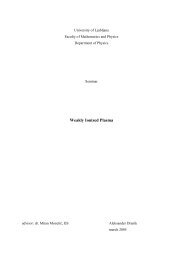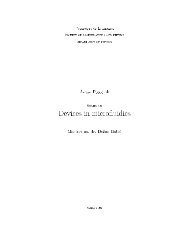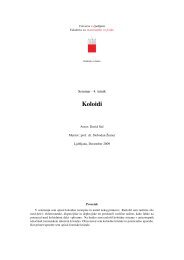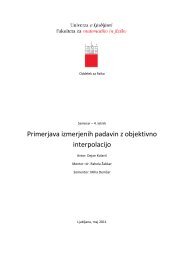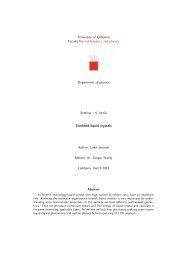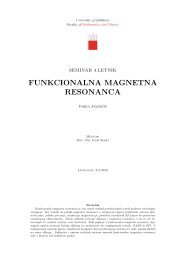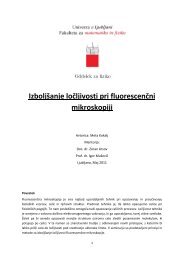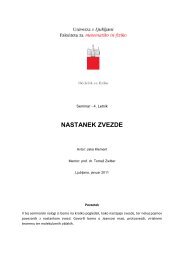Create successful ePaper yourself
Turn your PDF publications into a flip-book with our unique Google optimized e-Paper software.
This two-layer design also is important because it provides the necessary energetic barriers at the<br />
interface to effectively localize the recombination of the oppositely charged carriers at or near the<br />
interface region. As a result, this organic interface region, on the order of 100 to 200 Å thick, is also<br />
primarily responsible for the light generation from the SMOLED device.<br />
3.3 Phosphorescent dopping (Singlet, Triplet excitons)<br />
The process of charge injection and recombination in OLEDs results in the generation of singlets and<br />
triplets. Quantum statistics limits the direct generation of singlets to 25%, while the rest of the<br />
excitons, 75 % are triplets (Figure 17). In traditional OLEDs, which are fluoroscence based, only the<br />
singlet excitons contribute directly to the light generation process. Taking into consideration the<br />
device plannar geometry, and other factors, the external quantum efficiency is limited to about 5% [5].<br />
Significant increases in the device quantum efficiency can be brought upon by allowing the triplets to<br />
contribute to the light-emission process. This can be achieved by using phosphorescent dyes in an<br />
appropriate host material [15].<br />
Figure 17: singlet and triplet exciton light emission<br />
Even though highly fluorescent dyes increase EL efficiencies for small-molecule OLEDs, they<br />
only harness a fraction of all electrically generated excitons. Two types of excitons are formed when<br />
electrically injected carriers recombine: singlet excitons with total spin S = 0 and triplet excitons with<br />
total spin S = 1. Since the ground state of organic molecules has S = 0, and the relaxation of a<br />
molecule through the radiative recombination of an exciton must conserve spin, fluorescent emission<br />
from singlet excitons is the only allowed process that generates photons. Hence, for typical<br />
fluorescent-based OLEDs, all triplet excitons are wasted. For small-molecule devices, it is believed<br />
that only 25% of the emissive singlet excitons are formed during electrical excitation. However, some<br />
materials do exhibit light emission from triplet excitons. In these materials, the singlet and triplet<br />
states are mixed and hence the excited triplet states share some singlet character and radiative decay to<br />
the ground state is allowed. This process is known as phosphorescence. Adding a heavy metal atom<br />
such as iridium to an organic molecule increases the spin-orbit coupling that mixes singlet and triplet<br />
excited states allowing for efficient radiative decay of triplet excitons.<br />
The energy level schematic of an OLED employing an iridium-based phosphorescent small<br />
molecule is shown in Figure 18. Here, two ETL layers are used - one (CBP) hosts the phosphorescent<br />
iridium complex and one (BCP) acts solely as a hole (and exciton) blocking layer. Upon injection,<br />
holes are transported in the HTL and recombine with the electrons that have been injected into the hole<br />
blocking layer and have drifted to the CBP ETL. Both singlet and triplet excitons are formed in the<br />
CBP host and then both types of excitons are transferred nonradiatively to the emissive state of the<br />
iridium complex. This state then emits light through phosphorescence. The net effect is that both the<br />
singlet and triplet excitons created in CBP are utilized for light emission. And this clearly<br />
demonstrates the potential of high efficiency OLEDs based on phosphorescence.<br />
12



